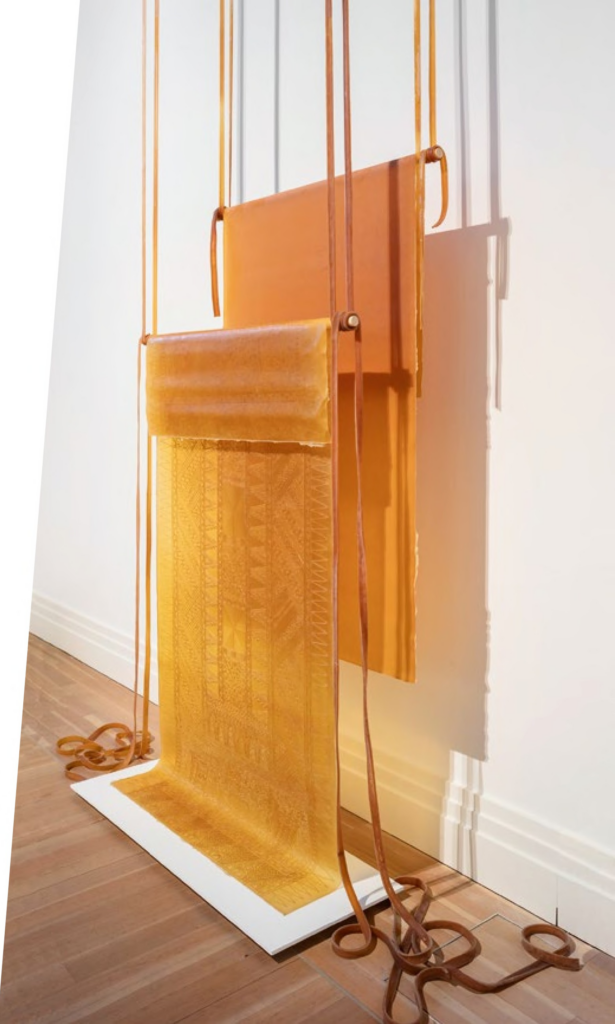ROSSELLA BISCOTTI
She was born in 1978 in Melvant, Italy, and lives and works in Rotterdam, the Netherlands
Surati, 2019; Sanikem – Nyai Ontosoroh – Madame Le Boucq, 2019; Annalies, 2019; Princess of Kasiruta, 2019; Mei, 2019; Maiko, 2022
2019-22

Rossella Biscotti excavates social and political systems of the modern era, laying bare the frameworks of power and uncovering alternate historical narratives. Her work has explored political movements of her native Italy, judiciary and penal institutions, the social structures of collaboration, and Dutch colonial archives. Underpinning her layered sculptures, performances, films, and installation are rigorous processes of fieldwork and research. Graduating from the Accademia di Belle Arti in Naples in 2002, she attended the Rijksakademie in Amsterdam in 2010–11. Her work was exhibited at dOCUMENTA 13 in Kassel (2021), and she has been an artist-in-residence with the DAAD in Berlin (2018) and the NTU Centre for Contemporary Art Singapore (2020).
In her 2019 series of rubber works Biscotti draws from the patterns used in the wax-resist technique of hand-dyed batik. Laid across the floor or draped over wooden rods, the flat sheets have fleshy beige and reddish tints, which together with the pliable, tactile quality of the rubber implicate the human body. As intricate expressions of female labor and the domestic domain, the fabric motifs lend the work a strong feminine sensibility. This is underscored by the titles of the works, names borrowed from female characters in the writings of renowned Indonesian author Pramoedya Ananta Toer (1925–2006). Sanikem-Nyai Ontosoroh-Madame Le Boucq, Maiko, Annalies, Mei, Surati, and the Princess of Kasiruta all inhabit The Buru Quartet (1980–88), a series of four novels that Toer wrote while imprisoned in the Buru penal colony under Suharto’s rule from 1969 to 1979 and published over a decade later.
Biscotti’s longstanding fascination with The Buru Quartet revolves around its portrayals of colonial-era social and racial hierarchies, emerging anti-colonial movements, and the lives of different women, such as the insightful, concubine-turned-matriarch figure of Nyai Ontosoroh or the physically and mentally scarred character of Surati, who chooses to be infected with smallpox as a path out of servitude. Fabrics referenced in the novel are manifested as stand-ins for the transferable value of the female body in a narrative dominated by male protagonists. Biscotti casts the complexity and exploitation imprinted on these female biographies in the materiality of rubber—a product of historical forces such as forced migration, crop substitution, and indentured labor in Sumatran plantations.
